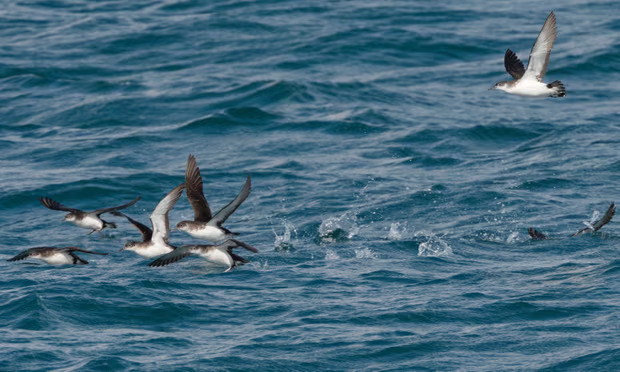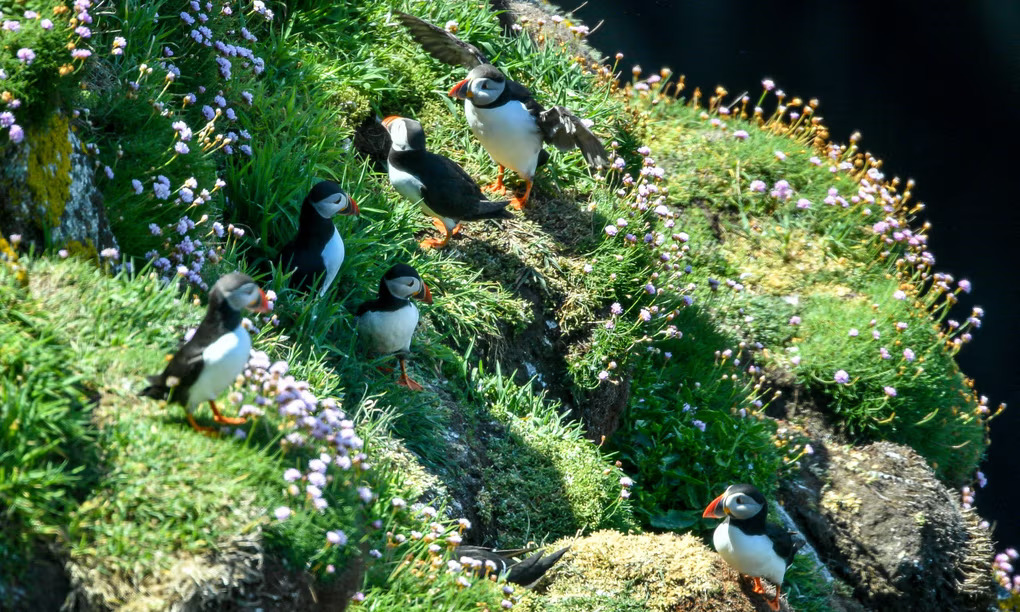In a stunning comeback, Lundy Island in the Bristol Channel has become a bustling haven for seabirds, boasting more feathered residents than at any time since the 1930s. This tiny island, globally renowned for British seabirds, now hosts a whopping 25,000 Manx shearwaters, constituting 95% of England’s breeding population. Joining this avian fiesta are 1,335 puffins and over 150 pairs of storm petrels, a species that made Lundy its home in 2014.
Despite facing recent challenges such as avian flu and dwindling wild food sources like sand eels, Lundy Island’s seabird population thrived, reaching an impressive 40,000 this summer. This remarkable turnaround is a far cry from the mere 7,351 seabirds recorded in 2000, with puffins nearly on the brink of extinction, numbering just 13 in 2001.
The catalyst for this rejuvenation? A bold initiative to eliminate rats from the island. In a partnership led by the RSPB, Natural England, the Landmark Trust, and the National Trust, rats, who had been wreaking havoc on eggs and chicks, were eradicated between 2002 and 2004. This move, while criticized by some animal rights groups at the time, has proven pivotal in restoring Lundy’s ecosystem.
Declared rat-free in 2006, Lundy Island stands as a testament to the positive impact of removing invasive predators. Paul St Pierre, a conservation officer for the RSPB, emphasizes the broader potential of such projects, stating, ‘Partnership projects like this show just how much potential there is to restore species and landscapes on an incredible scale. If we can restore over 30,000 birds to one small island in the Bristol Channel, just imagine how much could be achieved if everyone came together to restore nature right across the UK.’

The triumph of Lundy Island’s seabird revival isn’t just a fluke—it’s a testament to ongoing biosecurity efforts. Rigorous measures have been implemented to ensure that no rats sneak back onto the island via boats, a critical component in preserving the newfound avian paradise. Annual surveys tell the story of a remarkable population recovery, with seabirds flourishing in numbers.
As seabird populations globally have faced a daunting 70% decline since the 1950s, and many northern Britain seabirds experiencing significant setbacks, Lundy’s success stands out. The southern summer populations of seabirds, particularly those feeding in the waters off south Wales and south-west England, have defied the broader downward trend.
Derek Green, the general manager of Lundy, expressed delight at the resurgence, emphasizing the island’s commitment to conservation. He stated, ‘Conservation is at the heart of everything we do on the island, and we look forward to continuing to nurture this very special place for future generations to enjoy.’
British coasts hold international significance for various species, including puffins, grey seals, and Manx shearwaters. Over 80% of the world’s population of these species nests in the country. The renaissance of Lundy’s seabird population echoes the abundance of the 1930s, harking back to a time when an estimated 80,000 seabirds called the island home in 1939.
